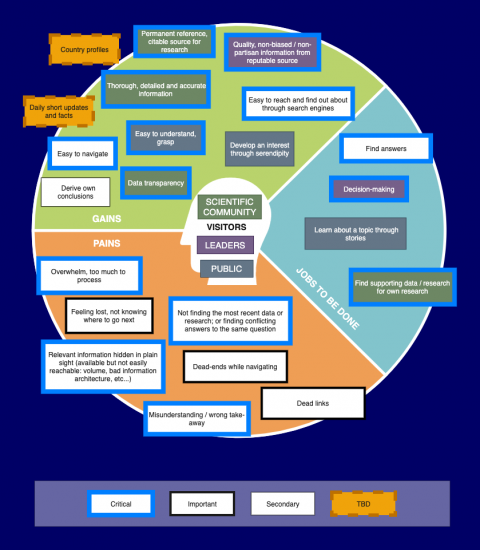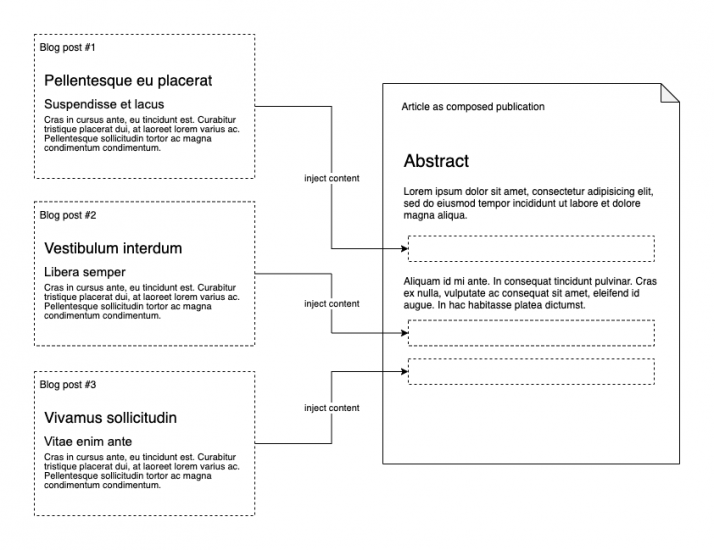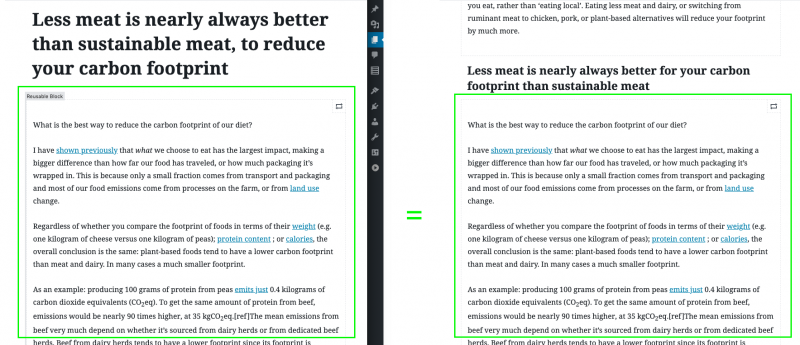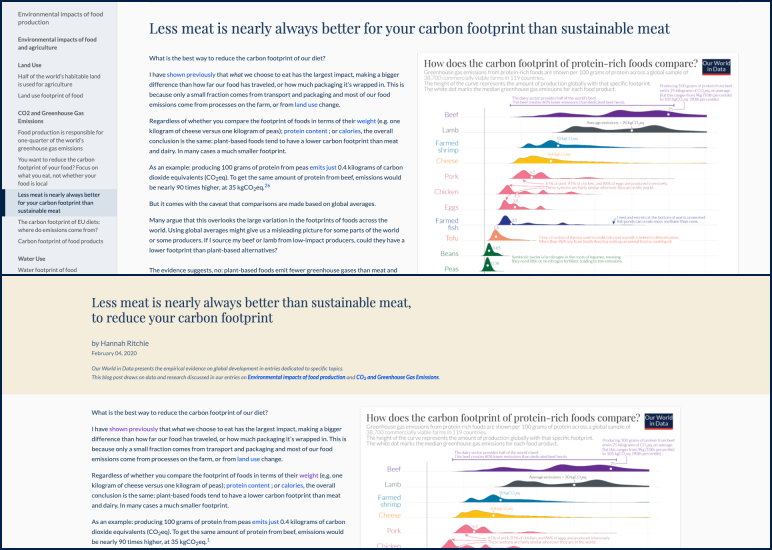I joined the Our World in Data team in the summer of 2019 with the overall mission of creating an intuitive architecture for readers to navigate the site and find the relevant data and research.
As part of my initial assessment of the work ahead, I conducted a series of internal interviews to uncover the ambition of what would become an incremental redesign project. These interviews were transcribed as stakeholder profiles (Authors, Developers and Visitors / Readers), which later helped to crystallize the scope of the project around public-facing user interfaces on the one hand, and authoring tools on the other.1 You can find my initial analysis and conceptual solution here.

Out of this conceptual work, we identified a critical piece of the puzzle: the ‘article’ and ‘post’ model. Articles are longer pieces of content centered around a general topic (e.g. https://nightingale-owid.netlify.app/cancer), which benefit from a permanently visible entry in the main menu. Blog posts are shorter, usually address a specific question and are more ephemeral in nature (e.g. https://nightingale-owid.netlify.app/progress-against-cancer).
In the past, authors would have to select one of these two formats when writing a new piece of content. As a result, some of the most relevant content on a particular topic would gradually disappear in the flow of blog post publications, and never surface in the central article that covers the same topic.
To address this limitation, we set out to explore a slightly different model where articles become collections of blog posts.
The general idea behind this model is that authors write short posts, focusing on a specific question. The article then agglomerates all of these posts, much like an expanded index, and becomes a one-stop reference for all our writing on that topic. The structure of that expanded index is rather loose: it is not merely a list of all pieces of content on a particular topic, but rather an organic aggregate of posts interlaced with article-specific material.
Additionally, this model allows posts to appear in more than one entry, an ambition that has been part of the roadmap for some time now.

As it turns out, recent versions of our content management system provide a way to cater for similar embedding use cases, in the form of “reusable blocks“.2 In a nutshell, these blocks are arbitrary pieces of content that can be abstracted into their own entity so that modifying it in one place actually modifies it in all the places where it is referenced.
From a conceptual point of view, this idea is rather unexceptional. What is exceptional however is how these blocks can help structure content down to the technical level, after the content has been written. Where traditionally technical structure had to come first, authors can in this case continue to write posts in an organic way, and then ultimately create a reusable block out of it to be embedded into an article. Interestingly, reusable blocks can also be created from articles, thus allowing authors to progressively transform older monolithic articles into their new modular structure when and if necessary.
The ability to share content between posts and articles through reusable blocks has proven to be very successful for our authors in terms of overall visibility of their work. Readers now have access to their latest content not only through timely blog post updates but also in the larger context of growing reference documents.
From a content editing and management perspective, these reusable blocks make it easier for updates to spread across the whole site and contribute to keep Our World in Data up-to-date as new data surfaces.
As illustrated, a live example of this implementation is the Less meat is nearly always better than sustainable meat, to reduce your carbon footprint post, which also appears in the Environmental impacts of food production.

